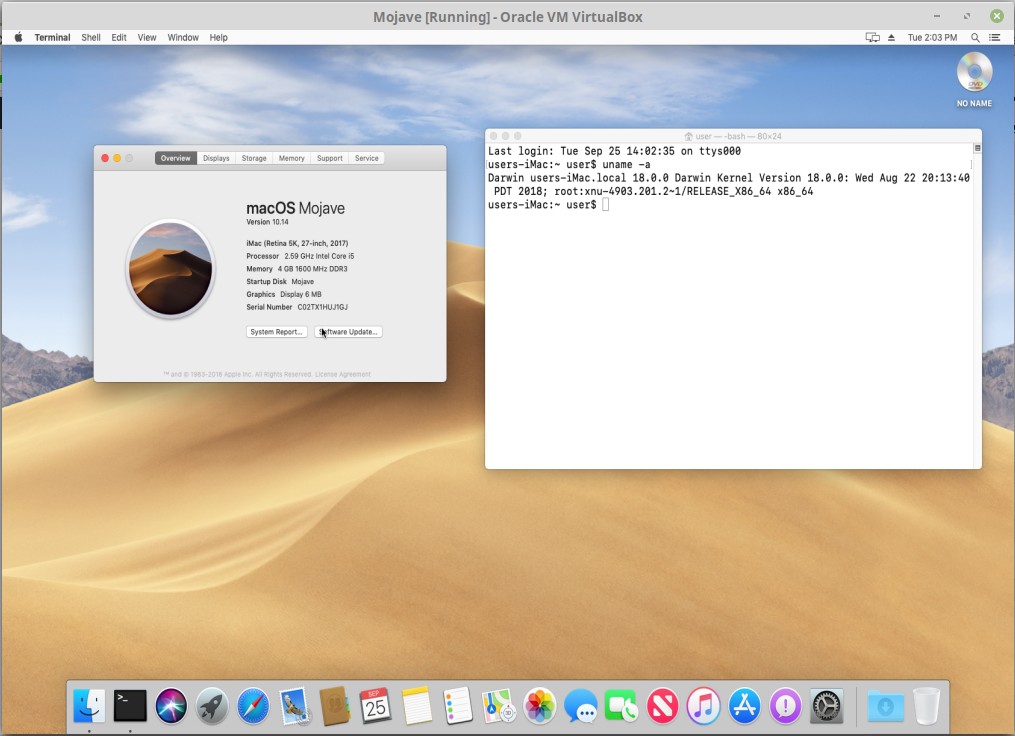
In fact, an interesting feature in VirtualBox can save sessions on the operating system running on the virtual unit, so you can close it and come back exactly where you left it. Once the download completed double-click to extract the setup from the dmg file. The advantages of creating virtual units are many, like using programs that are only compatible with one operating system or the other, taking the virtual modular units with you, and creating backup copies of them. Head over to VirtualBoxs official website, download the macOS version.


#Virtualbox for mac os mac os x
The program supports almost all versions of the most recent operating systems, such as Windows 10, Mac OS X Yosemite, and the latest updates of Ubuntu or any other Linux distribution. You can try reinstalling it by just running the installer. You have to take into account that these take part of the actual physical resources of your computer, so you need equipment that is powerful enough to run both the guest and host operating systems. All your VirtualBox VMs and the applications settings are not stored in the actual. The virtual disc where the system runs is completely customizable, and it lets you modify the virtual hardware to whatever specs you need, be it the processor, the RAM memory, or the storage capacity.

VirtualBox is an open-source and multi-platform tool, available for Windows, Linux, and Mac OS X, as well as other operating systems, that lets you create virtual disc units where you can install a guest operating system, inside the one on your own computer, and use it as if it were actually installed. Presently, VirtualBox runs on Windows, Linux and Mac hosts and supports a large number of guest operating systems including but not limited to Windows (NT 4.0, 2000, XP, Server 2003, Vista, Windows 7, Windows 8, Windows 10), DOS/Windows 3.x, Linux (2.4, 2.6, 3.x and 4.x), Solaris and OpenSolaris, OS/2, and OpenBSD.


 0 kommentar(er)
0 kommentar(er)
